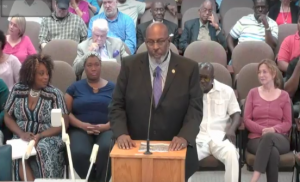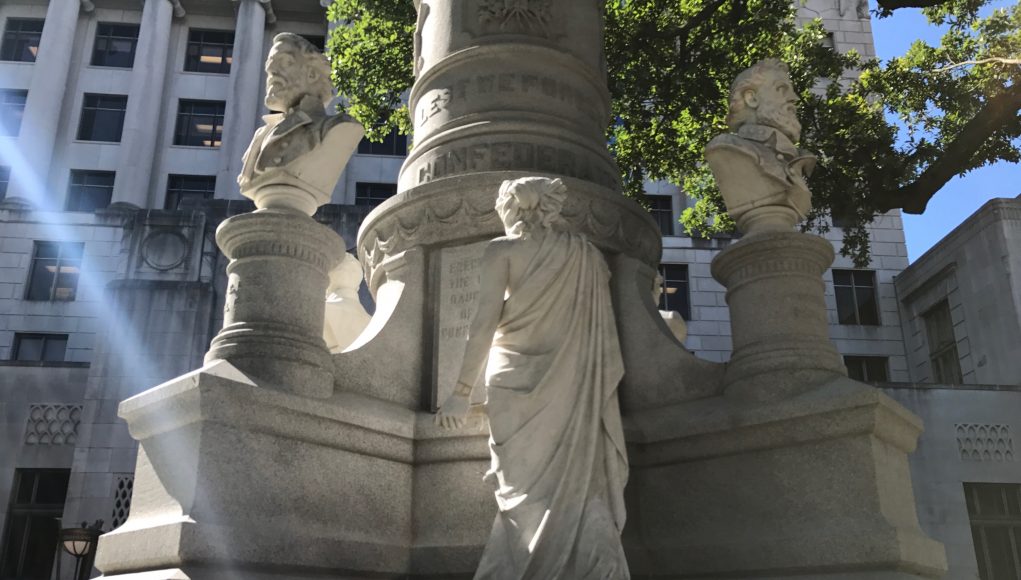In a landmark decision, the Caddo Parish Commission has voted 7-5 in favor of moving the monument commemorating Confederate soldiers and marking the surrender of the Confederacy to the Union in Shreveport on May 26, 1865. The vote came down largely along racial lines.
Some dissenting members of the Commission, including Doug Dominick (District 1), Mike Middleton (District 8), and John Atkins (District 9), spoke in favor of a substitute motion put forth by Mario Chavez (District 10) to let the citizens decide by putting it to a vote in a special election.
Commissioner Lyndon B. Johnson (District 2), Stormy Gage-Watts (District 7), and Commission President Steven Jackson (District 3), argued that the substitute motion was “a punt” and a shirking of the duties of the Commission and suggested that the special election would be an additional step and all of the costs of litigation and removal would still be incurred. That substitute motion failed 5-7.
Citizens both for and against spoke at the commission meeting and were joined by representatives from the Take it Down Caddo group, United Daughters of the Confederacy, and the NAACP.
The question of whether the monument should sit in front of a court of justice has been ongoing for over a decade, and in November of 2011, the flag of the Confederate States of America was removed by an 11-1 vote. But that wasn’t enough for some who believed the statue, not just the flag, was a symbol of the repression of black citizens who make up the majority of the City of Shreveport and still others who saw it as a monument to traitors of the United States, regardless of their cause or intent.

However, the tragic events in Charlottesville, Virginia, which occurred just days after the citizen committee’s recommendation, added fuel to the flame of discussion and debate in Caddo Parish. The local debate was encircled by concerns of violence and fear of demonstrations by the KKK or white supremacists, which so far have not materialized.
Other cities have committed to removing these monuments, most of which didn’t appear until half a century after the Civil War ended coinciding with the height of Jim Crow. Pro-monument rallies have been scarcely attended and pro-removal supporters have largely worked to make sure the monument isn’t just removed, but finds a proper home at a proper venue.

Commission President Steven Jackson spoke in his time before the vote while holding a court decision claiming the land has been in the possession of Caddo Parish for over 100 years, saying that the claims to ownership of the public square have already been decided in past court decisions.
Even still, there are legal avenues for delaying or stopping the removal of the monument that the United Daughters of the Confederacy (or others) may well pursue, but given what we saw today, and what we’ve seen over the last year as this discussion has evolved, we might suggest that a better use of our time is to work toward finding a suitable location for placing the monument. I recommend the Louisiana State Exhibit Museum in Shreveport instead of the Norton Art Gallery as some have suggested.
The Confederate monument was erected in 1905 by the United Daughters of the Confederacy. It features an unknown Confederate soldier along with the busts of General Robert E. Lee, General “Stonewall” Jackson, General P.G.T. Beauregard, and General Henry W. Allen. It also features the Greek goddess Clio, the muse of history.

